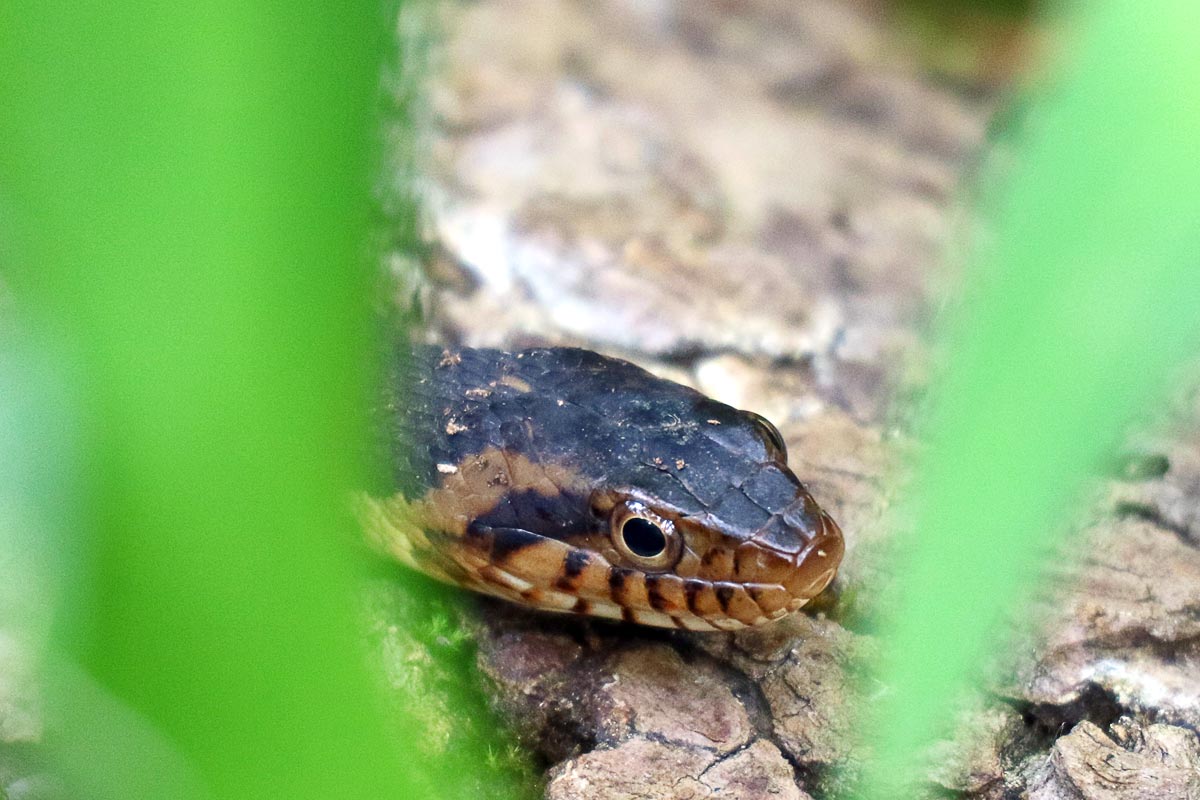
See you later, Allen Ginsberg
—Richard Manuel
A murky forest of vivid green and grey: I’m walking along a mostly-sturdy wooden platform with no railing over a mile deep into the buzzing muck of Barataria Preserve, an alien land somehow both comforting and spooky in southern Louisiana. Everywhere, lilies poke up from the black water in their thousands and explosions of bright green leaves conceal trees that, when you lean and look better, are revealed to be improbably thick and old-looking. They drip with moss, the beards of ghostly old men hung from every bough after some midnight swamp trial in ancient times.
It’s days like this on a road trip that make you think, “I can’t believe I was in the desert trying not to get snagged on cacti earlier this week.” While on this road around the USA to raise money for JDRF things are moving fast. In the big picture, anyway; here in the swamp just south of New Orleans and just north of the wild Gulf of Mexico, time does what it wants to do. And what it wants to do this afternoon is kick back and listen to the wind.
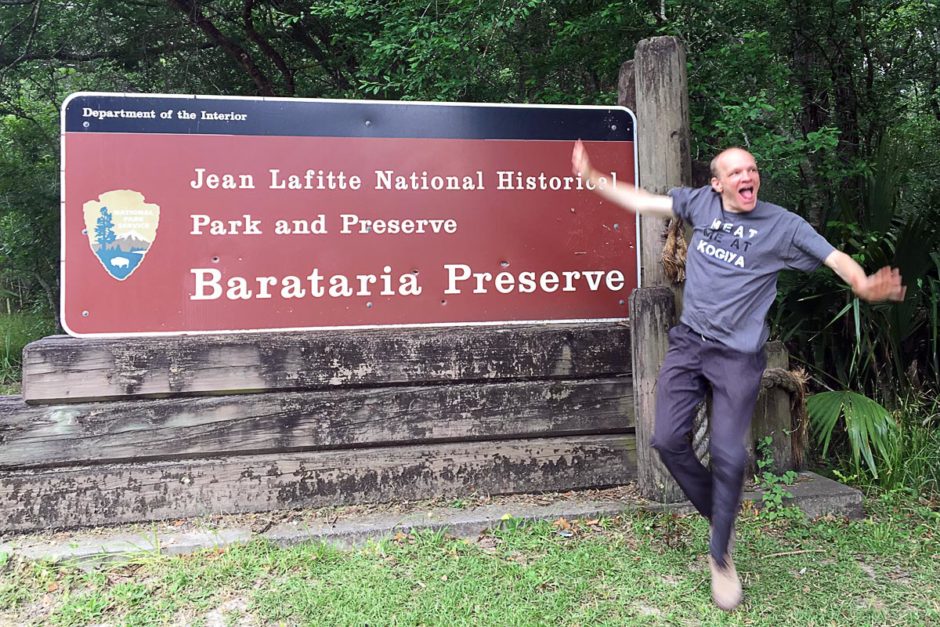
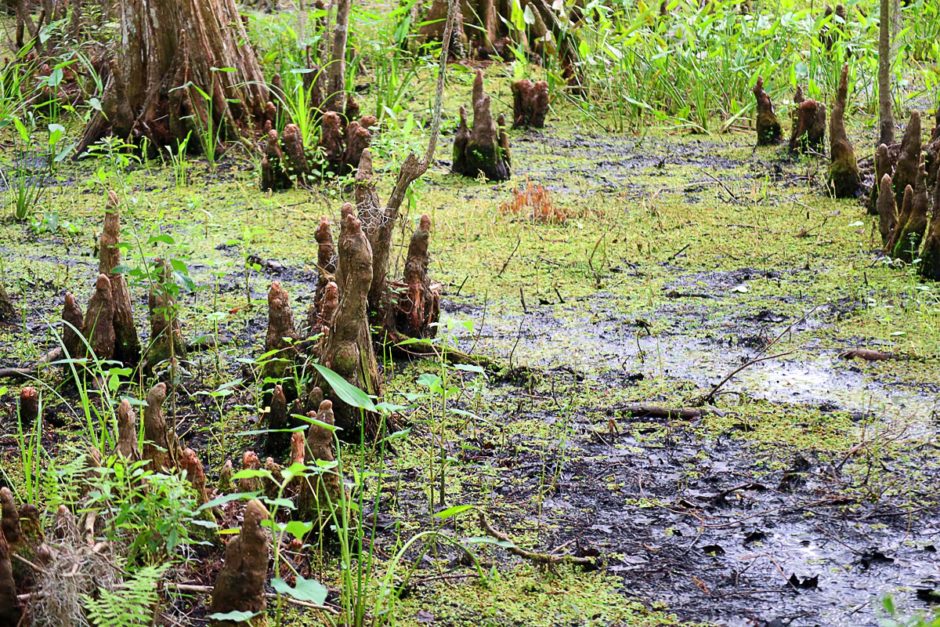
It’s Day 23 of this trip, and Masayo and I are walking, after yet another day of driving, around our tenth National Park Service area. The Jean Lafitte National Historical Park and Preserve is a collection of six sites scattered around southern Louisiana. Five are historical and museum-like centers, and this sixth (and the only one we’re visiting) is the pure, undeveloped expanse of the Barataria Preserve.
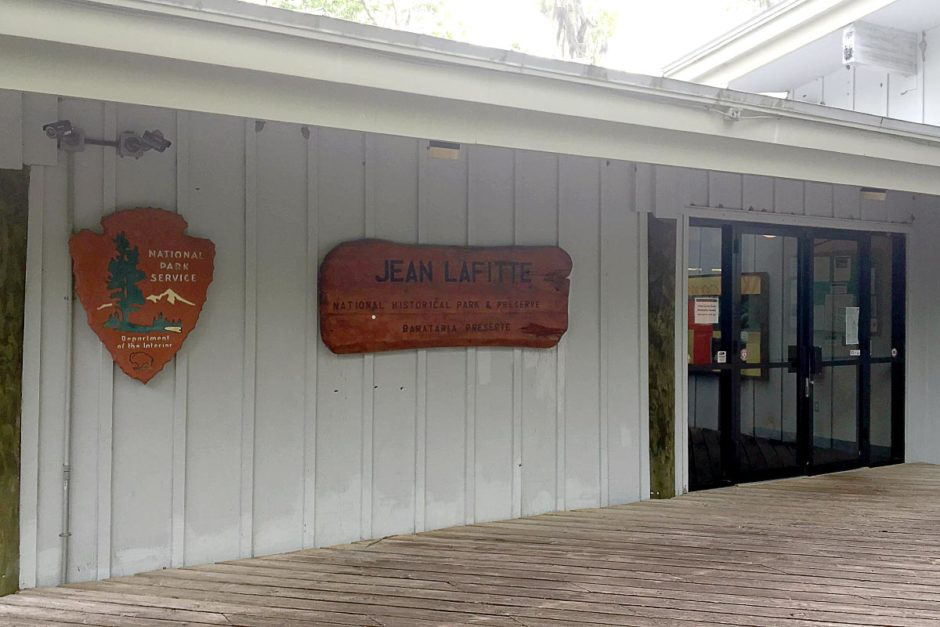
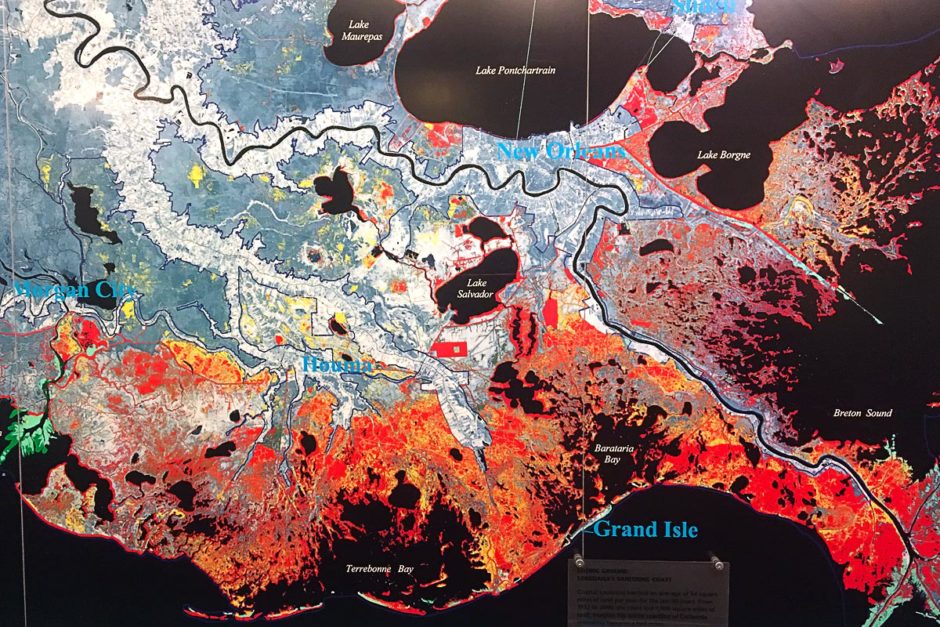
A psychedelic view of southern Louisiana, from the visitor center at Barataria Preserve.
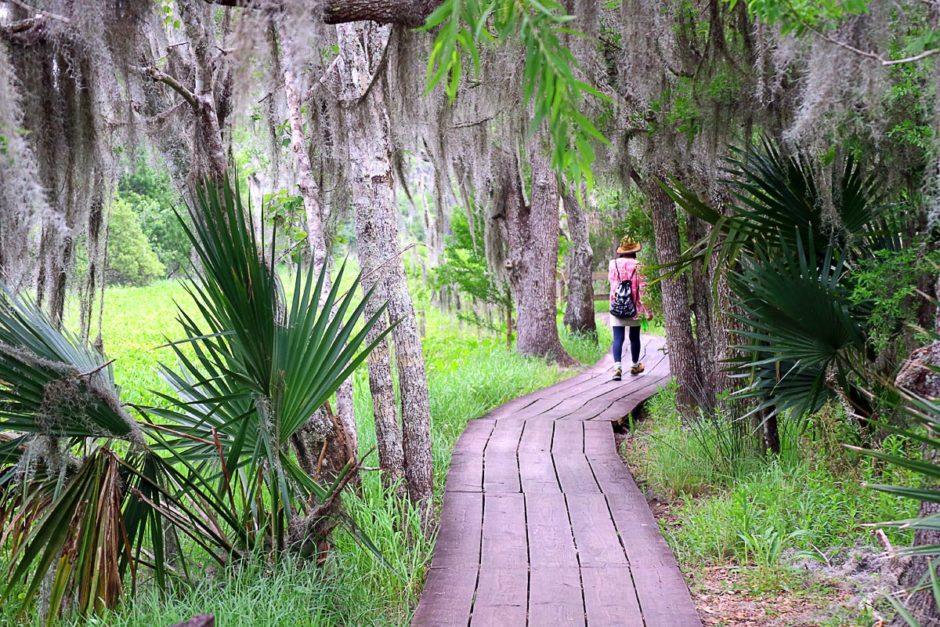
A wooden walkway leads from the visitor center (though there aren’t many people here today) into the swamp, and you’re pretty much on your own. The lady at the desk advised us where we might have the best chance to see alligators, but it seemed a little far; we weren’t sure how much walk we had in us.
In fact, we ended up walking most of it. Think wimpy but behave strong, that’s us.
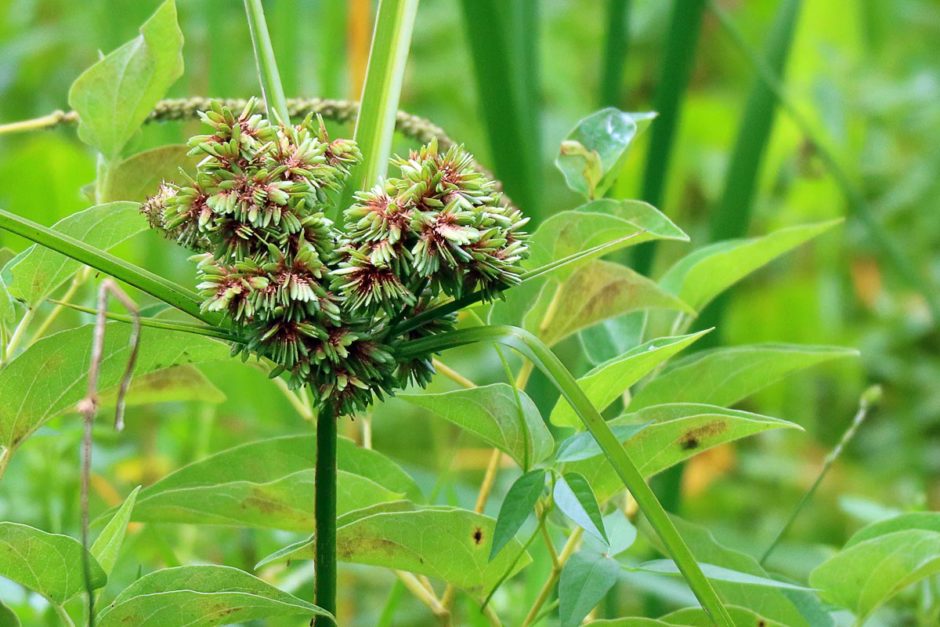
Our alligator mojo completely failed us, unfortunately; we didn’t see a one and it wasn’t for a lack of staring closely at each pool of water we came upon. But we were accompanied by quite a few other weird and wonderful creatures on our four-mile round trip through this most Louisianan of wet thickets.
Dragonflies, either blue or green, proved our most dedicated hosts. They never bothered us by flying too close, but were clearly loving their self-appointed role of buzzing just ahead of us and calling us to venture further into the quiet, mildly unnerving morass.
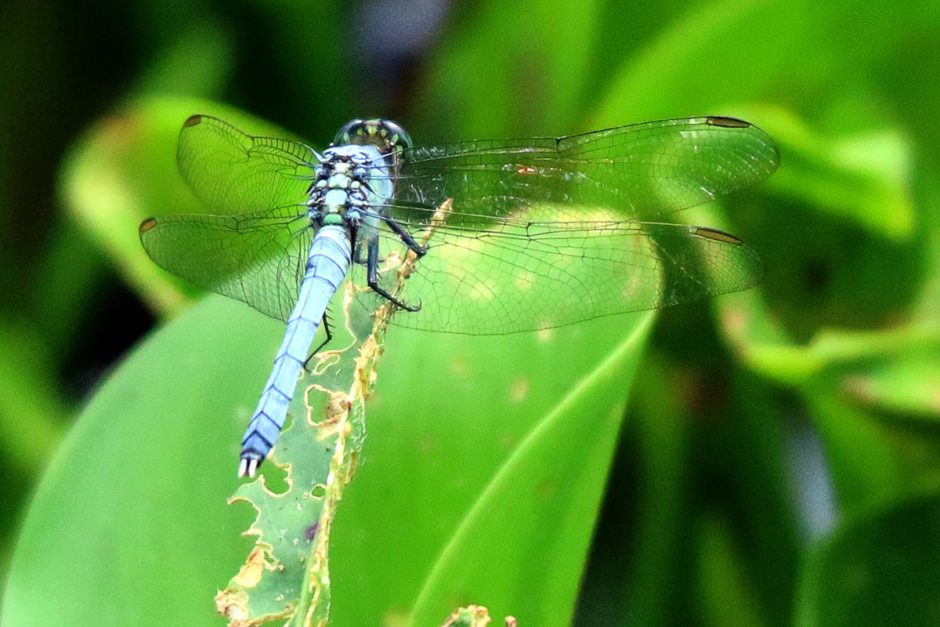
We often kept the dragonflies waiting: lizards would catch our attention, darting in manic start-stop motions on the walkway itself, then hopping onto (and to the backside of) a nearby tree trunk when we crouched to take pictures. Mostly, though, it was the snakes that we kept seeing: a small one curled up and lazing on some thick green plants in the water was the first, thanks to Masayo’s keen eye. Others rested on rocks or slithered slowly through the mud.
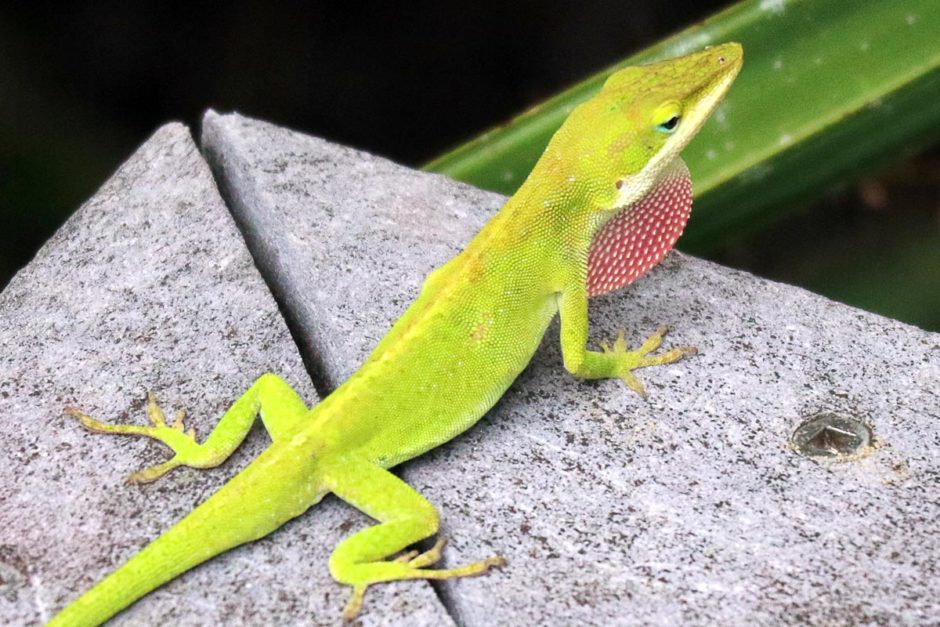
The neck is cool, but it’s the eye that really gives this pose its punch.
One, the star of the show for sure, lay across the walkway horizontally as we rounded a bend hidden with opaque palmetto leaves that clattered together in the wind. This snake was three thin feet of black and yellow, stretching out and enjoying himself. When we approached, cameras blazing, he began to scoot off. Off, and out of site, we figured, but in fact he started curling around the small edge of the walkway, as if showing off his gravity-independent reptilian skills.
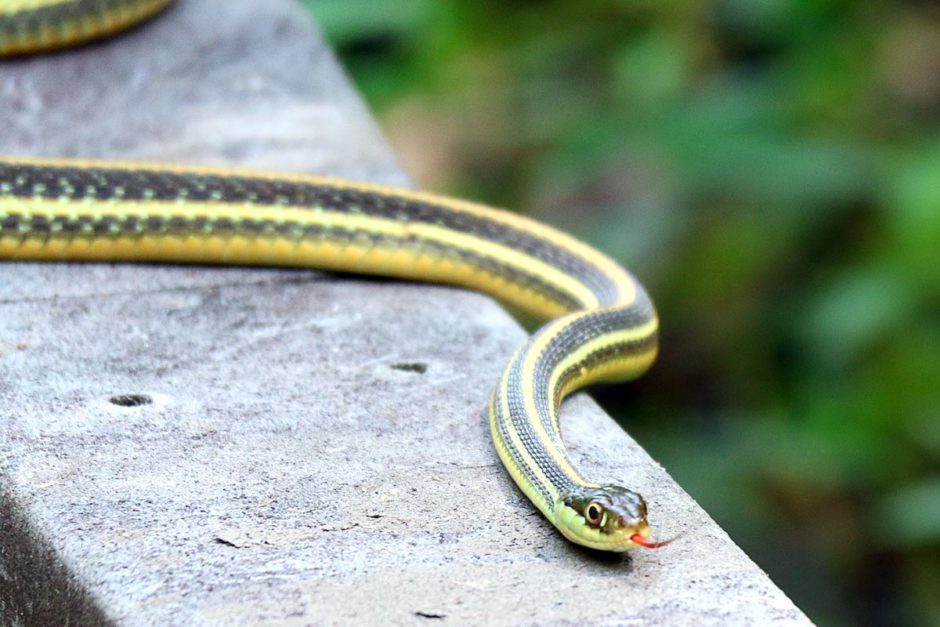
I’m not exactly frightened like Indiana Jones of snakes, but I wouldn’t say I jump with joy at seeing them. (Not with joy, anyway.) At Barataria Preserve I saw enough that eventually I was smiling knowingly and nodding with familiarity when I saw some scaly beast draped around a small tree. “Oh, those fun-loving guys,” said the new swamp-master me as I barely even slowed down to stare.
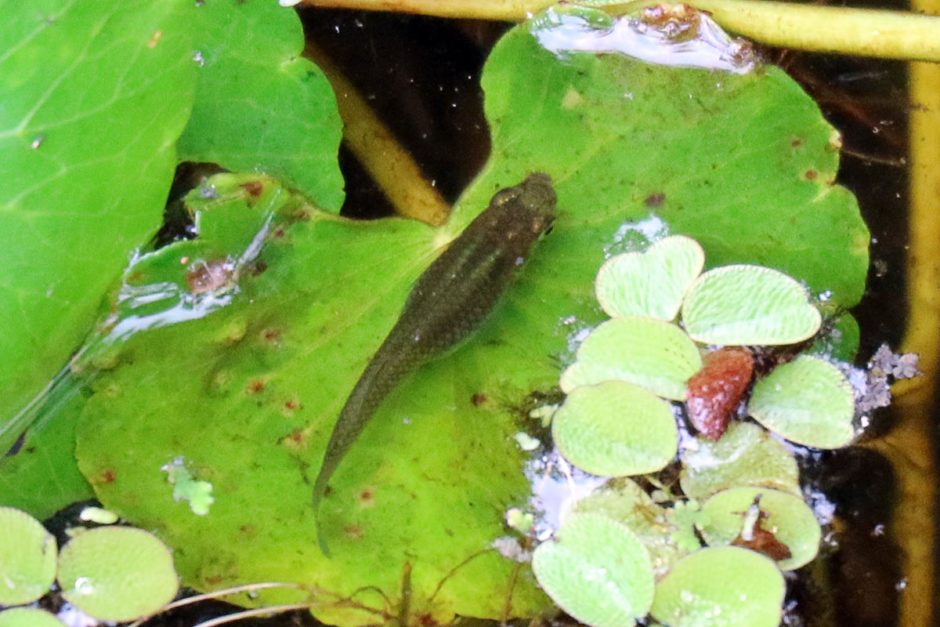
As we neared a part of the walkway over a deeper section of water, a woman who’d been walking some distance ahead of us with her son told us she had just seen a small alligator enter the water and swim under the walkway. She showed us a photo on her phone and walked off. Masayo and I hung around peering at the water, darting back and forth across the planks, for five minutes hoping to see the guy. We never did, and gave up.
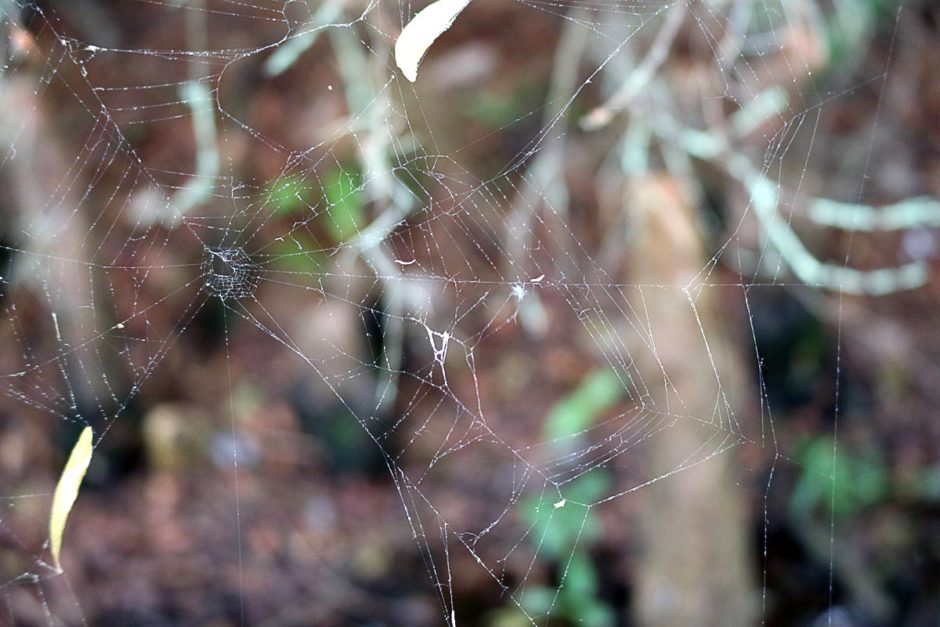
The snakes-and-small plants part of Barataria soon changed into the swamp-lilies-and-hairy-moss part. Even wetter than the first section nearer the visitor center, this was a place we truly felt disconnected from the rest of the world. The few other people we’d seen were gone, and all we heard was the gentle breeze, an occasional bird (never seen), and short, high-pitched belches emanating from the water – what we assumed were frogs calling out to each other in some ritualistic late-afternoon bayou conversation.
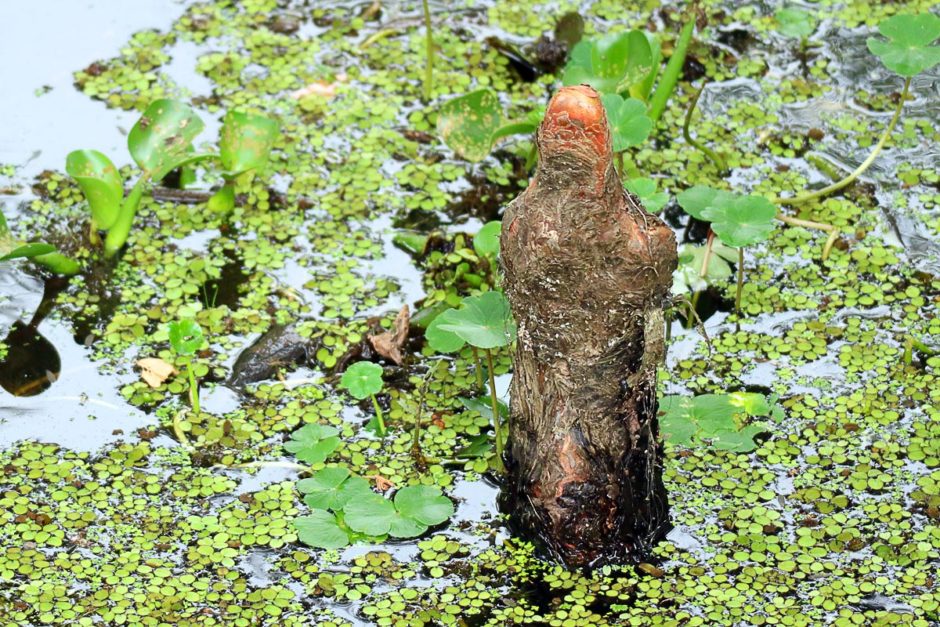
We wanted to get back to the visitor center before it closed at 4:30 and had to turn around a little bit before the farthest reaches of the walkway. I promised Masayo we’d see an alligator on the way back. After all, hadn’t we had excellent luck in turtle-spotting at Joshua Tree National Park in California a couple weeks ago? “You just wait,” I promised with a confidence based purely on blind hope.
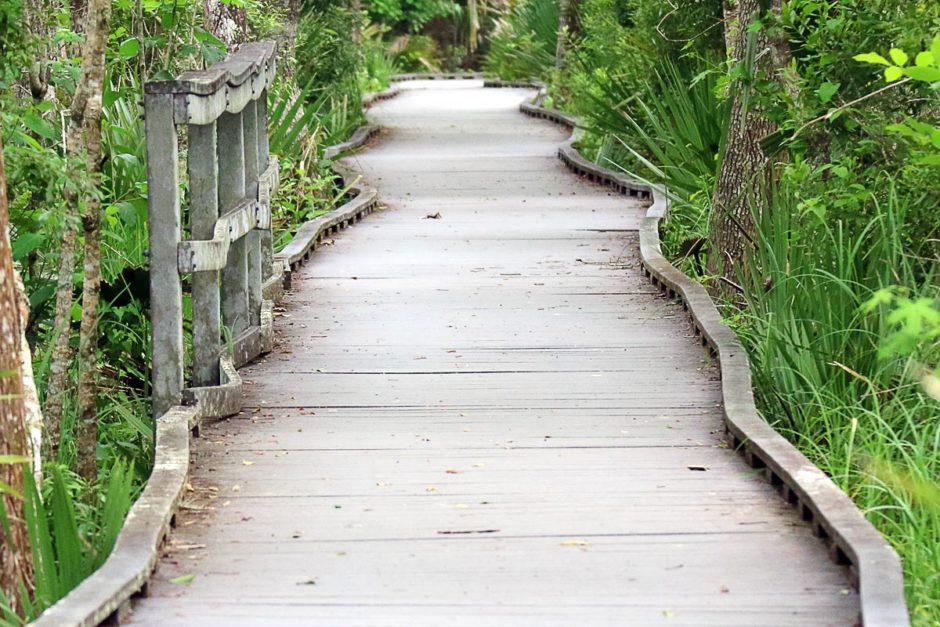
What we did run into on the way back was the same woman from before. “We saw three more alligators,” she said as if it were no big deal, and showed us photos. Masayo and I looked, jaws dropped. We were nearing the visitor center and were unlikely to see any in this area.
And we never did. But, we did see the photo on the woman’s phone, so I guess my promise to Masayo wasn’t totally untrue. It counts, right? Right??
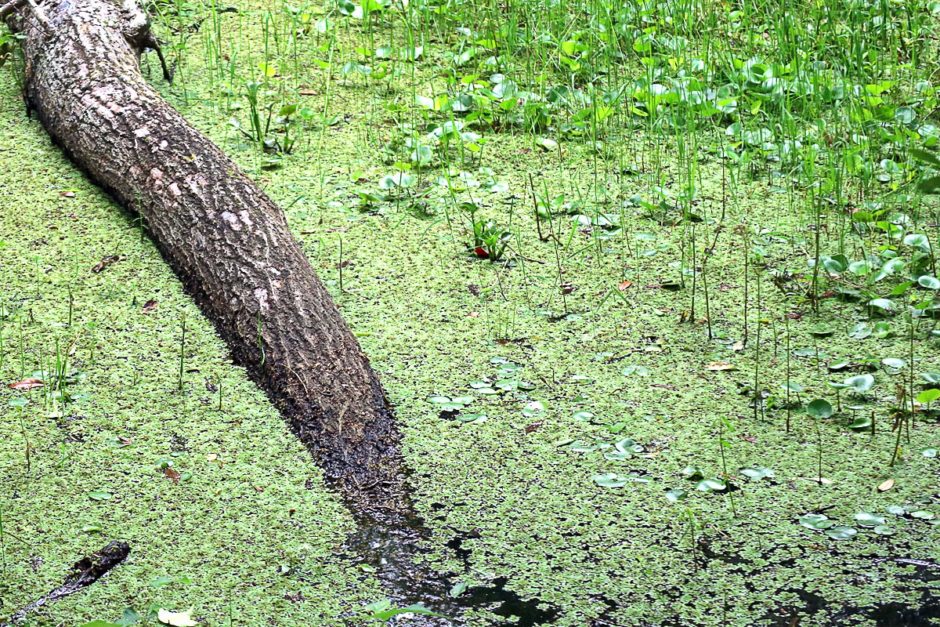
Well even if it doesn’t, we loved the experience deep in a real Louisiana swamp. With the shrimp po-boys, jambalaya, catfish, and andouille gumbo we’ve been eating, Barataria Preserve was the only real way to sum up this nature-themed trip through America.
We were lucky that it was a slightly overcast day, which kept the temperatures down, and there was a breeze, which kept the mosquitos away. But no matter the weather, Barataria Preserve is worth the trip. A walk through the moist air with the friendly (if overly secretive) animals and insects is bound to make you feel as lackadaisically self-assured as a Cajun chef, as primitive as the big red swell of a lizard’s throat, as wise as those old men’s beards swaying in unison in the trees over ancient Louisiana.
Blood sugar on a swamp hike
Before the walk Masayo and I had lunch: a picnic in the car, with the windows up to avoid bugs. My BG was high before the meal – 268. (Breakfasts are often not working out well on this trip, and today’s was especially thick, biscuits and big hash browns, followed by hours of sitting in the car. Oops.)
So I had to calculate a Humalog dose for the picnicky food I was eating, the unknown amount of walking I was going to be doing immediately afterwards, and the highness that I was already. I decided on seven units: should be enough for the food but not the extra highness. Let the walk take care of that.
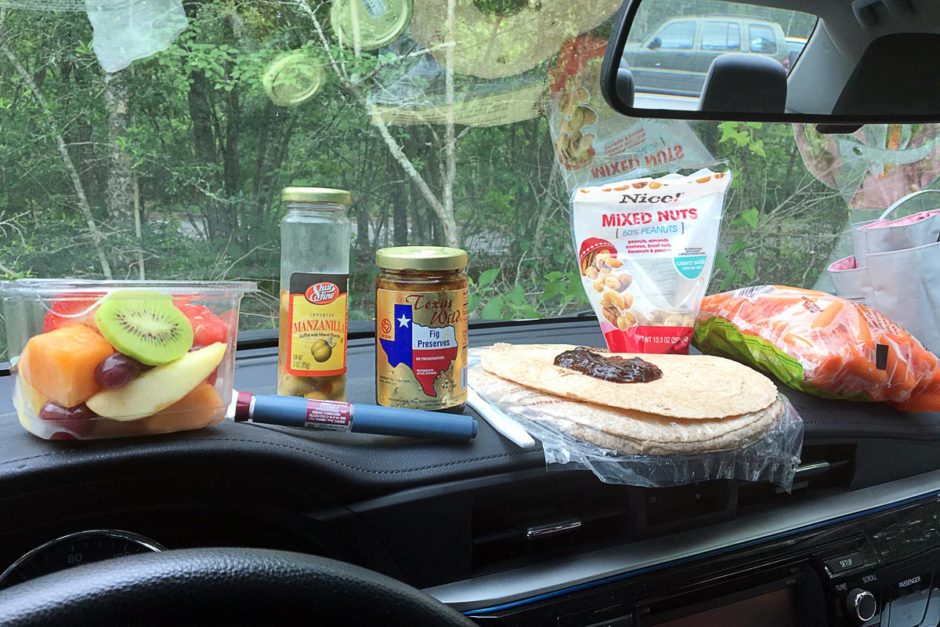
There’s no food allowed on the walkway because it attracts raccoons, but of course I took some with me. All wrapped up, of course; no raccoon would even know it was there. I took some packets of glucose powder and several cereal bars. More than I could possibly need – I’m not excited about getting caught in the middle of a south Louisiana swamp after closing hours, shakily low and without food.
My dose worked well and I didn’t even need any of the food I brought: like at Carlsbad Caverns National Park a few days ago, this long post-shot hike didn’t give me any real problems. Halfway through the stroll I was 209, basically right where it should have been under the circumstances.
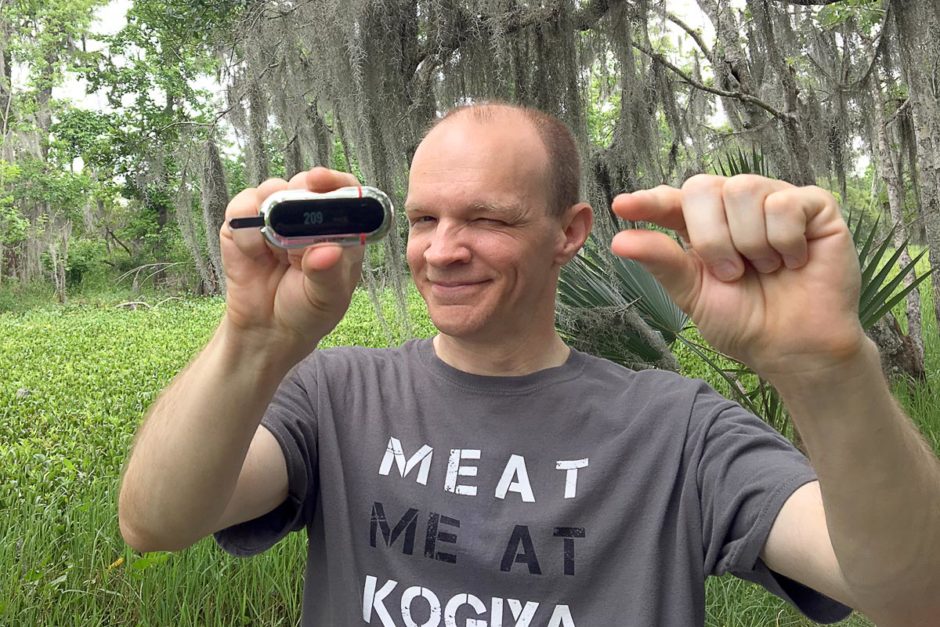
Juuust a bit high in the swamp.
By the time we got back to the car, I was 128. We drove about an hour to the hotel, then to a local restaurant (jambalaya!), where I was a little low. I poured some sugar from the table dispenser into my hand and ate it while waiting for the food to arrive.
Before bed I was 137. Sometimes an archer’s arrow flies straight through the air and punctures the bull’s eye; sometimes he shoots up into the air and the arrow arcs high and then falls and hits the bull’s eye from another angle. That’s how you have to handle exercise and insulin sometimes.
Thanks for reading. Suggested:
- Share:
- Read next: Day 26: Oh the diabetic rage in Apalachicola National Forest
- News: Newsletter (posted for free on Patreon every week)
- Support: Patreon (watch extended, ad-free videos and get other perks)

Support independent travel content
You can support my work via Patreon. Get early links to new videos, shout-outs in my videos, and other perks for as little as $1/month.
Your support helps me make more videos and bring you travels from interesting and lesser-known places. Join us! See details, perks, and support tiers at patreon.com/t1dwanderer. Thanks!
